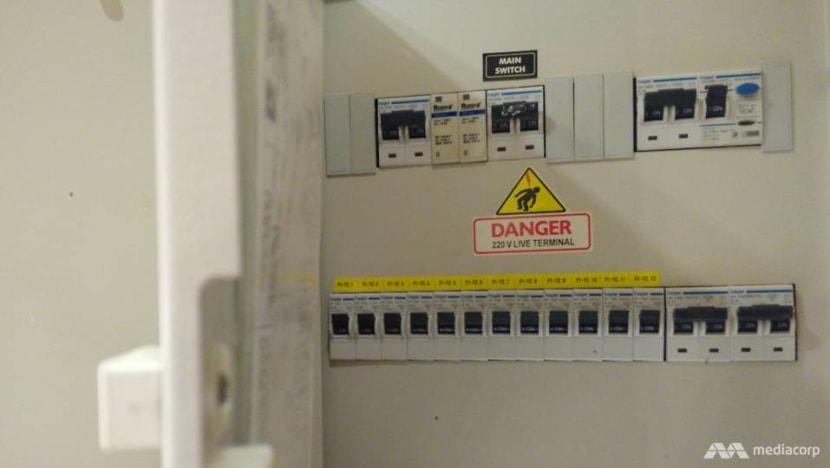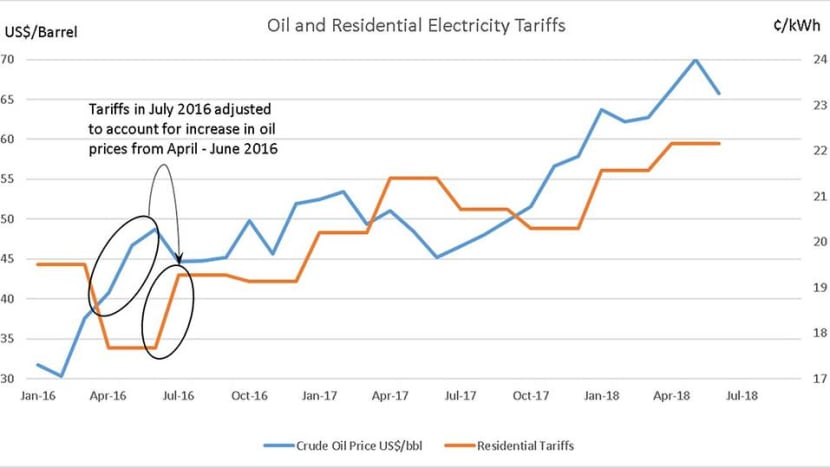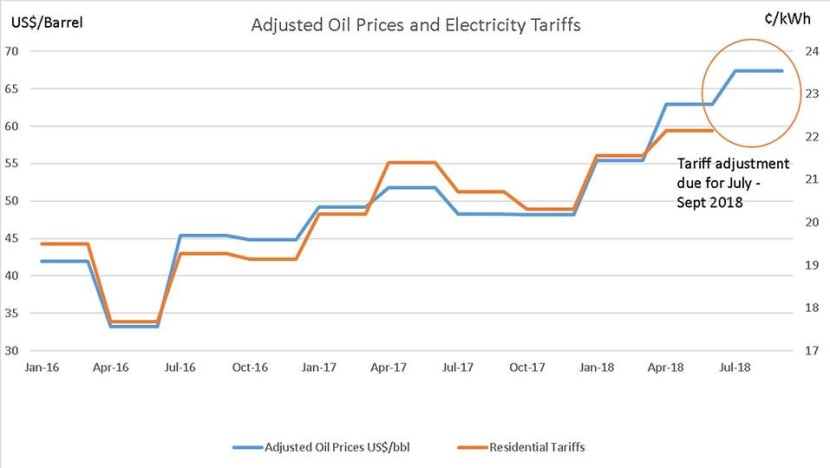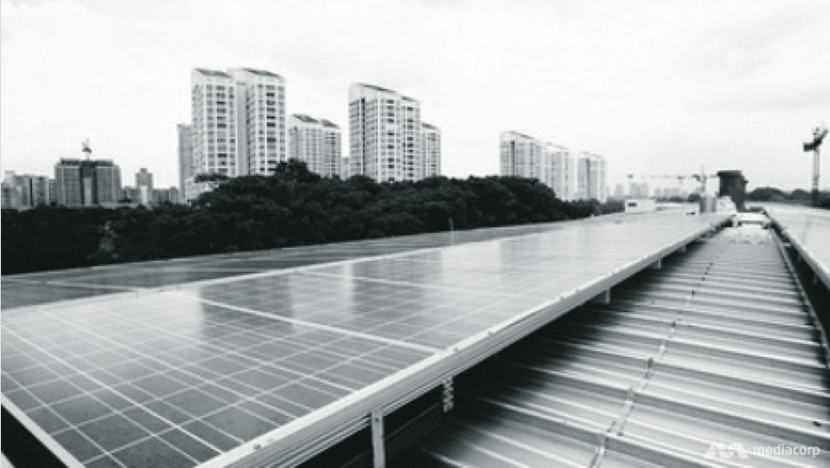commentary Commentary
Commentary: Oil prices have gone up and it may affect your electricity bill
Electricity prices in Singapore have been on the rise and the next quarter’s tariffs will be announced soon. Experts from the NUS Energy Studies Institute review the link between rising oil prices and electricity tariffs.

An electrical switchboard.
SINGAPORE: Oil prices have gone up, leading to some concerns on the viability of a recently resumed non-stop flight service from Singapore to New York by Singapore Airlines.
There are other worries regarding upwards inflationary pressures on petrol prices harboured by car owners.
A lesser known impact, however, is its effect on electricity tariffs, which is expected to increase in the third quarter of the year and should be announced before the end of June.
READ: Behind SIA's relaunch of the longest commercial flight, a commentary.
OIL DRIVES THE SINGAPORE ECONOMY
Much of Singapore’s energy needs are driven by oil imports. The consumption of petroleum products in both the industry and transport sector recorded a total of 9.7 million tonnes of oil equivalent, making up more than 63 per cent of total energy use in 2015, according to the 2017 Singapore Energy Statistics.
Given oil’s role in driving Singapore’s economy, it is natural for businesses and consumers to fret when its prices exhibit unusual volatility or show signs of impending hikes in response to supply-demand dynamics, or other driving forces such as geopolitics and trade wars.
While nowhere near those sky-high prices of more than US$100 a barrel from a few years ago, oil prices have surged recently to US$70 a barrel for West Texas Intermediate (WTI) crude oil in May 2018 - the first time it has seen such levels in more than three years.
Coordinated supply cuts by the Organisation of the Petroleum Exporting Countries (OPEC), and to a lesser extent, the US’s decision to impose sanctions on Iranian oil exports may have contributed to the rise.

We can expect to see improvements in the immediate future given Russia and OPEC’s recent commitment to increase combined production of up to 1 million barrels a day.
To what extent is this commitment sustainable remains to be seen given that only Saudi Arabia within the OPEC group and Russia have the technical capacity to increase production quickly while other OPEC members such as Venezuela and Iran are faced with political instabilities and export sanctions respectively.
WHY YOUR BILLS MIGHT GO UP
Some observers may question the correlation between oil prices and their own energy bills. A few questions are in order.
First, why are oil prices still affecting electricity tariffs despite electricity mainly generated from natural gas in recent years? Second, will electricity tariffs continue to rise in tandem with oil prices?
In Asia, purchased gas imports are typically pegged to oil price changes by pre-determined formulas due to the lack of an established pricing benchmark for gas trade. This nexus between oil and gas prices could weaken though, as more gas is being traded with greater flexibility in the future.
As tariffs are set on a quarterly basis, they can only be adjusted based on historical oil prices, leading to a lag.
This adjustment makes sense if oil prices were averaged from a previous quarter, with the result then utilised to set electricity tariffs for the following quarter. Hence, in Singapore, changes in tariffs are often one quarter behind changes in oil prices.
Based on this, electricity tariffs, adjusted in line with historical oil prices and factoring in the increase over the last quarter, could rise to beyond 23 cents per kWh for this upcoming quarter. What this means is households and businesses should prepare for yet another quarter of an increase in electricity tariffs - since oil prices already started to move up since mid-2017.
Households already saw increases in electricity tariffs to 22.15 cents per kWh from April to June this year, from 21.56 per kWh in the first quarter of this year and 20.30 cents per kwh from October to December 2017.


SUNNIER OUTLOOK FOR THE LONG TERM
If Singapore households anticipate that electricity prices will continue to rise, then they should plan to conserve energy to save on their utility bills in the coming future. But this could be a hassle for some depending on lifestyles and preferences.
Another option is for consumers to switch to an alternative electricity provider once the rest of Singapore opens to retail liberalisation in the second half of 2018.
The very nature of retail competition will guarantee sizeable discounts off the current default Singapore Power (SP) bills. But it does not mean electricity prices will no longer be affected by oil prices, as alternative offers will have to reasonably reflect the cost of producing electricity from fossil fuels.
For example, if households or businesses choose a discount-off pricing plan which offers a fixed discount off the regulated tariff set, prices will still move up and down over time, but remain at lower levels compared to SP tariffs.
Other types of pricing plans including fixed price plans or peak or off peak price plans may be more suitable, depending on one’s consumption patterns.
READ: Assessing the benefits of an Open Electricity Market, a commentary.
Those selecting hybrid plans with a percentage share of solar energy will enjoy smaller discounts off SP tariffs at present moment, as the cost of producing solar energy is still higher than the raw cost of generating electricity from fossil power plants.

However, this will change in the foreseeable future, with manufacturing costs of panels growing cheaper over time.
Singapore households and businesses can expect further reductions in electricity costs as more solar power can be more reliably used to meet national demand, once large-scale energy storage systems can be fully harnessed to fill up electricity supply-demand shortfalls reliably.
In short, electricity prices are currently still driven by oil price movements.
Given that electricity retail liberalisation can potentially reduce electricity tariffs and at the same time offer cleaner sources of electricity for those more concerned about the environment, it is best for us consumers to seriously consider switching to alternative electricity providers to enhance our well-being.
Allan Loi and Nur Azha Putra are research associates at the National University of Singapore’s Energy Studies Institute.













